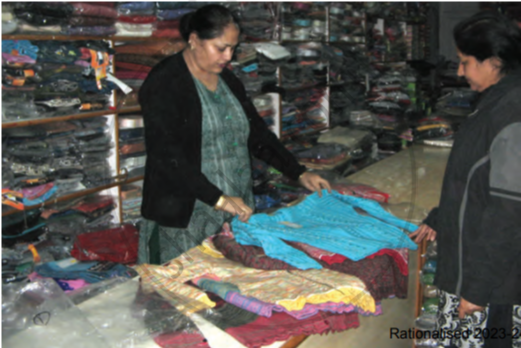Advertisements
Advertisements
प्रश्न
Fill in the blank:
| SECTOR | CRITERIA USED |
| Primary, Secondary & Tertiary | Nature of economic activity |
| Organized & Unorganized | ? |
पर्याय
Nature of Employment activities
Nature of Social activities
Nature of Production activities
Nature of Political activities
उत्तर
Nature of Employment activities
Explanation:

Organized and unorganised sectors are two ways of categorizing economic employment activity.
APPEARS IN
संबंधित प्रश्न
Cotton is a _________ product and cloth is a _________ product. (natural / manufactured)
GDP is the total value of _____________ produced during a particular year.
Find the odd one out and say why.
Tourist guide, dhobi, tailor, potter
Find the odd one out and say why.
Postman, cobbler, soldier, police constable
The service sector includes activities such as ____________.
Which of the following types of activities are covered in the secondary sector?
Information and communication technology is associated with ____________.
Primary sector is related to:
More than half of the workers in the country are working in which of the primary sectors:
Workers in the agricultural sector are:
Primary sector is also called as:
Tertiary sector is also called:
Choose the correct Pair from the following.
‘Tertiary sector is different from other sectors.’ Justify the statement with suitable arguments.
Study the following picture. The work done in the picture comes under which one of the following sectors of the economy?

Read the source given below and answer the questions that follow:
| For comparing countries, their income is considered to be one of the most important attributes. Countries with higher income are more developed than others with less income. This is based on the understanding that more income means more of all things that human beings need. Whatever people like, and should have, they will be able to get with greater income. So, greater income itself is considered to be one important goal. Now, what is the income of a country? Intuitively, the income of the country is the income of all the residents of the country. This gives us the total income of the country. However, for comparison between countries, total income is not such a useful measure. Since, countries have different populations, comparing total income will not tell us what an average person is likely to earn. Are people in one country better off than others in a different country? Hence, we compare the average income which is the total income of the country divided by its total population. The average income is also called per capita income. In World Development Reports, brought out by the World Bank, this criterion is used in classifying countries. Countries with per capita income of US \$ 49,300 per annum and above in 2019, are called high income or rich countries and those with per capita income of US $ 2500 or less are called low-income countries. The rich countries, excluding countries of Middle East and certain other small countries are generally called developed countries. |
What are the classifications of countries based on per capita income, and which entity is responsible for determining these classifications?
Read the source given below and answer the questions that follow:
|
Maharashtra is a state located in western India, with a population of over 110 million people. The state is home to several large cities, including Mumbai, and has a significant agricultural sector. However, the state is facing a severe water crisis, with its water resources coming under increasing pressure due to climate change, industrialization, and urbanization. The main challenges faced by water resource management in Maharashtra are:
|
- Mention any two reasons for the water crisis faced by the state of Maharashtra.
- Propose any one solution to mitigate the water crisis faced by Maharashtra state.
- Despite being the second highest rainfall-receiving state of the country, Maharashtra still faces water crisis. Substantiate this statement in 40 words.
